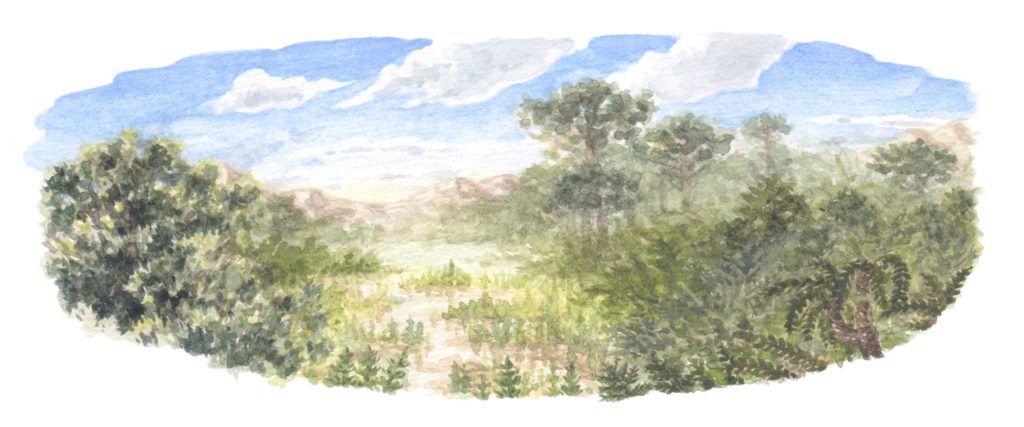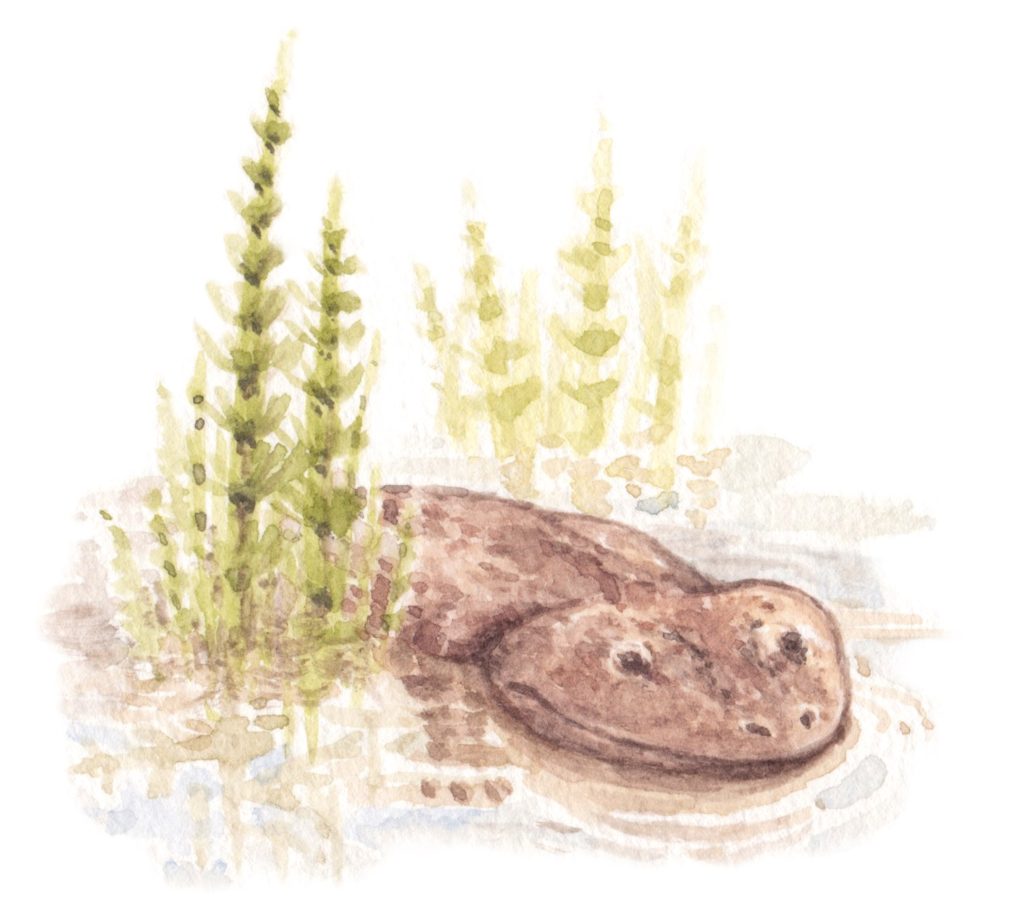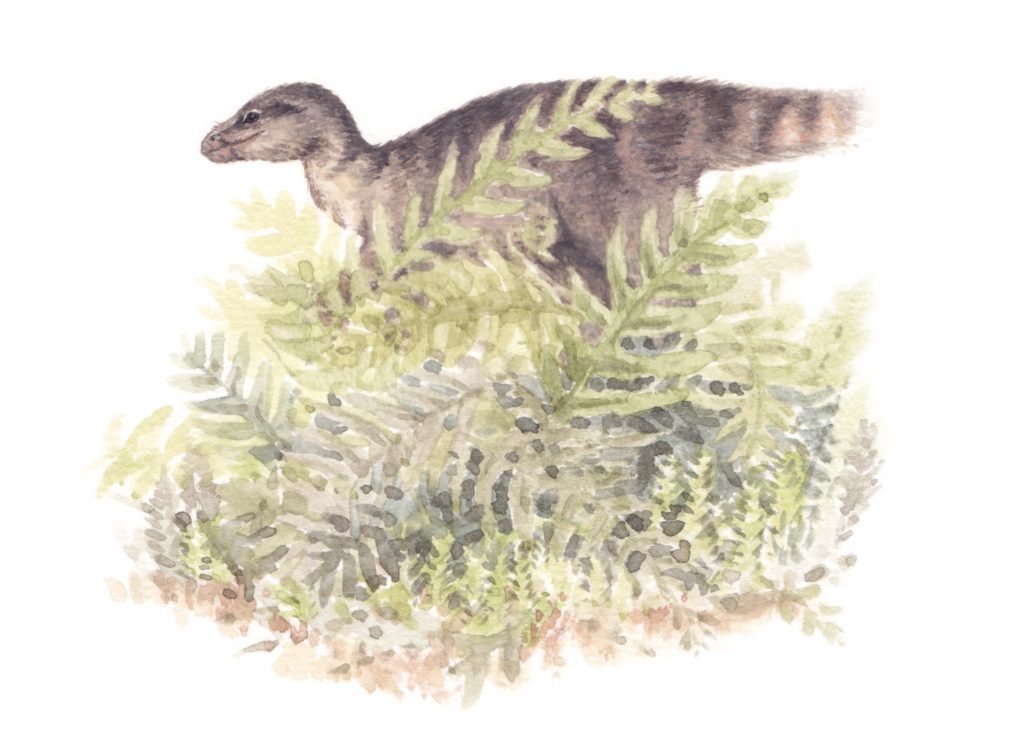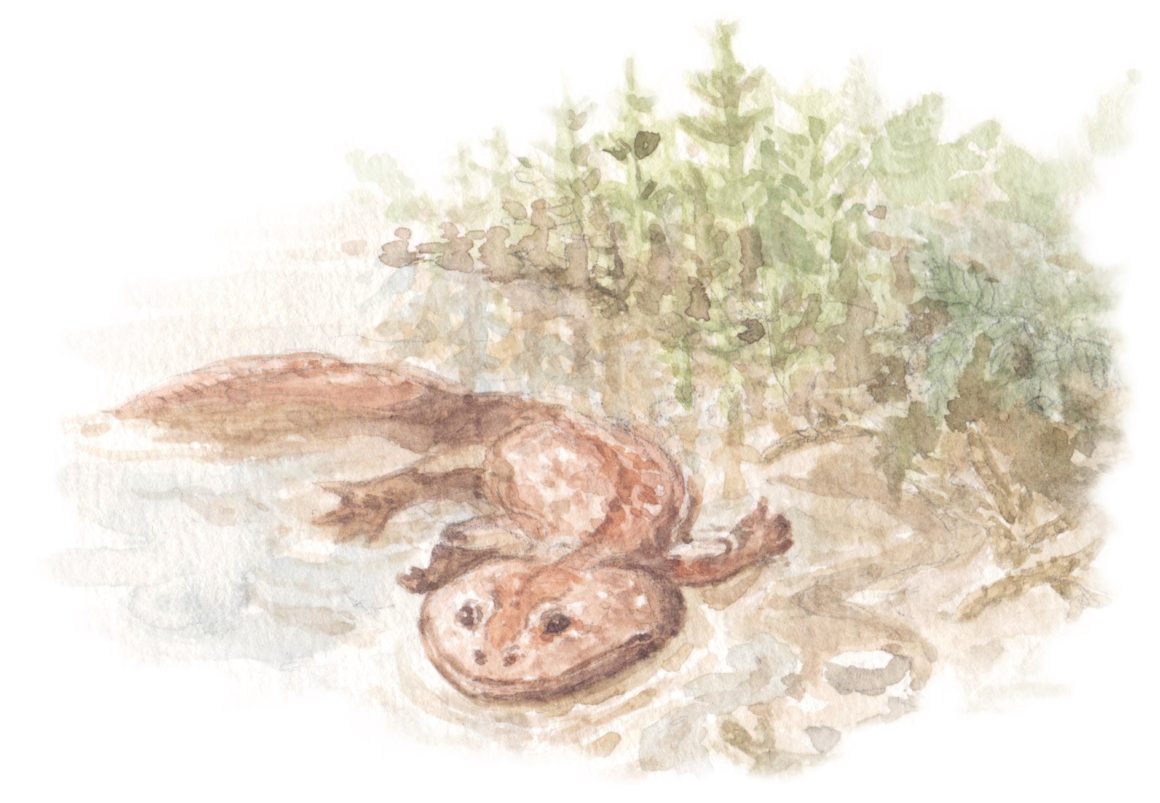From Great White Sharks to Estuarine Crocodiles, Australia has a reputation for perilous waters. Unsurprisingly, the waters of Australia’s past were no different and of the creatures that lurked in them, none were more bizarre than the ancient river-monster: Koolasuchus.
To visit this long-lost creature, we’d need to travel into the past 120 million years to a Cretaceous-era rift valley where the city of Melbourne will one day stand. The climate is cool and wet, and although there is no permanent ice at the poles, the ancient rift valley is well within the Antarctic circle. During the summer months, the landscape is bathed in near-constant sunlight. During the winter though, darkness falls over the forests for months at a time, and only the ethereal green glow of the southern lights pervades the gloom.

In this ancient rift valley, the towering skyscrapers of the future are replaced by vast forests of titanic conifers, similar to the Bunya Pines (Araucaria bidwillii) and Hoop Pines (Araucaria cunninghamii) that will one day grow on the east coast of Australia. In the future the sound of vehicles and busy commuters will signal the beginning of the day, but in this ecosystem the dawn chorus is made up of the echoing calls of ornithopod dinosaurs and the cries of passing pterosaurs gliding through the skies above. Below the towering conifers grow tree-ferns and cycads, and below those sprout clubmosses. The high rainfall of the time and topography of the landscape means that vast quantities of water pass through the rift valley before emptying into the ocean. It’s in these great waterways that the crocodile-sized Koolasuchus dwells.

Koolasuchus is the apex predator of these polar waterways, and a truly gigantic one, measuring in at over four meters long and weighing half a tonne! Like its distant modern relative, the Japanese Giant Salamander (Andrias japonicus), Koolasuchus lives in fast flowing rivers, likely due to the highly oxygenated water which likely allows it to breathe through its skin more easily. With a skull over half a meter long, it has little trouble ambushing small dinosaurs which visit the cool Antarctic rivers to drink.

Koolasuchus belongs to an ancient group of amphibians called the Temnospondyls. This formerly diverse group once spread across the world and dominated freshwater ecosystems. However, they all but vanished during the Jurassic era (the heyday of the dinosaurs). Koolasuchus is one of the last of these great amphibians which are believed to have declined partly due to the rise of crocodilians (crocodiles and alligators), which outcompeted them through much of their former range. Only the cold Antarctic weather has kept crocodilians from the waterways of the South Pole, allowing Koolasuchus to persist. But by 110 million years from the present, Australia will drift northwards enough to allow crocodilians to finally invade southern Australia. Fossils of Koolasuchus will be replaced by those of crocodilians and Australia’s last giant amphibian will go the same way as its ancestors, into the murky waters of extinction.
Banner image an original illustration by Cameron Brideoake. Cameron Brideoake is a natural history illustrator based in Melbourne. Inspired by the great naturalists of old, he works in traditional media, painting his subjects in watercolour and gouache. A fanatic for everything Earth science related, Cameron’s special interests include paleobotany, entomology and conservation. To follow his latest projects find him on Instagram or on Facebook.


Leave a Reply